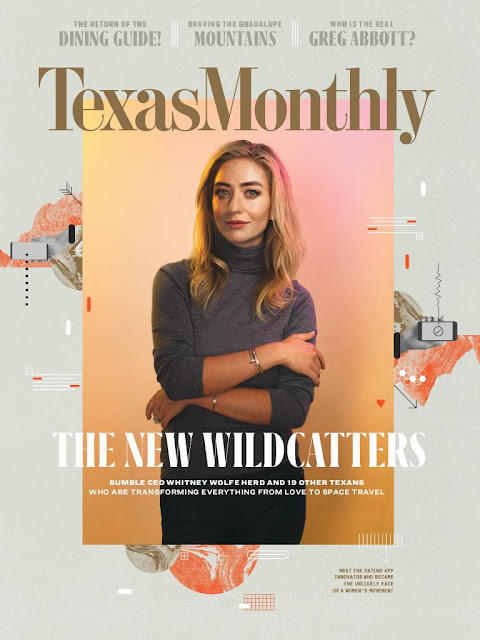It was a banner year for controversial magazine covers, with a couple even stoking international conflict.
The Turkish government took offense with French news magazine Le Point for its May 24 cover story, which labeled Turkey’s Islamist President Recep Tayyip Erdogan a “dictator.”
French President Emmanuel Macron even waded into a debate over the issue, criticizing those who attacked kiosks selling the magazine.
The cover featured a stern portrait of Erdogan with the cover line: “The dictator. How far will Erdogan go?” It accused the leader of locking up opponents, judges and journalists.
(See articles by the
Stockholm Center for Freedom, conservative Turkish daily newspaper
Yeni Safak, German international broadcaster
Deutsche Welle, and
Bloomberg.)
Jewish groups and Israeli media were triggered by the Nov. 29 issue of Hungarian business magazine Figyelo. Critics called the magazine cover anti-Semitic.
The cover illustration showed Andras Heisler, head of the Federation of Hungarian Jewish Communities, surrounded by falling banknotes. The group condemned the magazine, saying the cover “revives centuries-old stereotypes against our community.”
The
American Jewish Committee issued a statement saying, “Jews with money is a familiar, disgraceful anti-Semitic trope.”
(See articles by
the Times of Israel,
Israel National News,
the Jewish Chronicle and the
Jerusalem Post.)
Amnesty International’s Dutch arm landed in hot water this month for the cover of its “Glamoria” magazine. It tried to draw attention to the Mediterranean refugee crisis with a glossy cover that would present a “sharp contrast between the luxurious lifestyle portrayed in magazines and the terrible situation of people in the camps,” the human-rights group said. Its cover showed a half-naked fashion model lounging on a bed of orange life jackets.
Critics called the cover tasteless and said it sexualized refugees. Amnesty International Netherlands apologized and removed the cover.
(See articles by
NPR and India-based
Nation News.)
Time magazine caught flak for its July 2 cover. The cover’s photo illustration showed President Donald Trump towering over a crying child along with the headline “Welcome to America.” It was supposed to illustrate a story on the Trump administration’s policy of separating children from their parents after they are apprehended at the U.S. border. However, the child on the cover was never separated from her mother.
The cover played into Trump’s criticism of the mainstream media and what he calls “fake news.”
(See articles by
the Washington Post,
CNN,
Fox News and
Vox.)
Time magazine also was accused of stretching the truth with its Sept. 24 cover story that purported to show how little public-school teachers make.
The cover showed teacher Hope Brown in a classroom with the quote “I have a master’s degree, 16 years of experience, work two extra jobs and donate blood plasma to pay the bills. I’m a teacher in America.”
Reason magazine did some fact-checking on the story. Its assessment: “The polite term for this sort of journalism is b.s.”
Bloomberg Businessweek published a widely discredited cover story in its Oct. 8 issue. The cover text touted “The Big Hack: How China used a tiny chip to infiltrate America’s top companies.” It featured a photo of a tiny chip balanced on a fingertip. But the chip shown was not the spy chip in question and should have said it was a photo illustration.
The allegations in the article itself have been thoroughly debunked by experts and the companies named. Amazon.com, Apple and Super Micro called on Bloomberg to retract the story.
(See articles by
BuzzFeed,
the Verge,
STH,
9to5Mac,
Techdirt and
Reuters.)
Forbes magazine faced a backlash online for its Aug. 31 cover story on “America’s Women Billionaires.” The cover labeled reality-TV star Kylie Jenner a “self-made” almost-billionaire.
Critics noted that the 21-year-old was born into wealth. One Twitter user said calling Kylie Jenner a “self-made billionaire” is “like claiming you made soup from scratch because you opened a can and reheated.”
(See articles by
the Daily Mail,
CNN and
Fox Business.)
The October issue of Cosmopolitan magazine’s U.K. edition caused a firestorm by featuring plus-size model Tess Holliday as its cover model.
“Good Morning Britain” host Piers Morgan called the cover “dangerous and misguided”. He said Cosmopolitan was “celebrating morbid obesity” by promoting the 300-pound woman to its readers.
The magazine responded that it was trying to promote body positivity.
(See articles by
the Daily Mail,
the Independent,
Mirror and
People.)
The June issue of National Geographic initially was praised for raising awareness about plastic polluting the world’s oceans. The cover showed a submerged plastic bag that looked like an iceberg.
But the publication was slammed as hypocritical for shipping the magazine to subscribers wrapped in two plastic bags in some countries.
(See articles by
the Indian Express and
CNN News18.)
Model Paris Jackson, who is bisexual, apologized for appearing on the cover of Harper’s Bazaar in Singapore, a country where sex between men is punishable by up to two years in prison.
Jamie Tabberer, an editor at Gay Star News, started the debate when he criticized the September cover. He said Jackson’s appearance on it was incompatible with her pledge to support gay rights. “The hypocrisy is absurd,” he said.
(See articles by
the New York Times,
USA Today, the
Straits Times,
Teen Vogue and
Allure.)
GQ stirred up a hornet’s nest of controversy in November by naming tennis great Serena Williams as its 2018 “Woman” of the Year. Fans found the use of quotation marks troubling.
Critics said the use of quotation marks around “woman” appeared to call into question her gender or her femininity.
(See articles by
the New York Times,
Vox,
Today,
USA Today and
Vice.)
South African magazine Move was criticized as racist for its Nov. 28 cover story on the interracial relationship between singer, actress and dancer Kelly Khumalo and rapper Chad da Don.
The magazine cover featured a picture of the couple with the text “Kelly Khumalo madly in love with umlungu.” Umlungu literally means “white scum” and is used to derogatively refer to white people in South Africa.
(See articles by Ghafla and
Briefly.)
Grihalakshmi, a women’s magazine published in India, tried to raise awareness about the the need for mothers to be able to breastfeed in public. It chose to portray model Gilu Joseph breastfeeding an infant on the cover of its March issue.
Conservative readers criticized the subject matter of the cover. Others pointed out that Joseph is not a mother and is just pretending to breastfeed an infant.
(See articles by
India Today, the
Telegraph,
BBC,
Newsweek and
SBS News.)
Texas Monthly magazine was accused of pay-for-play with its February cover featuring the CEO of Austin-based dating site Bumble.
The Columbia Journalism Review reported that Bumble had agreed to spend $25,000 to $30,000 on social media promotion for the magazine if the dating site’s CEO, Whitney Wolfe Herd, was featured on the cover.
(See articles by
Columbia Journalism Review and
Statesman.)
Men’s Journal magazine departed from its usual cover format that features famous men with one of three haircuts with its September issue. That issue’s cover included a photo of Donald Trump’s alleged former mistress Karen McDougal.
McDougal reportedly received the cover treatment as part of a deal with American Media Inc., the Trump-connected company that owns the National Enquirer as well as Men’s Journal. AMI bought the rights to McDougal’s story about her extramarital affair with Trump then buried it in a “catch-and-kill” deal before the 2016 election.
AMI spun its “hush money” payout to McDougal into a payment to appear on the cover of the men’s magazine.
(See articles by
the Wall Street Journal,
the Daily Mail and
Raw Story.)
Update (late addition):
On Dec. 30, French newspaper Le Monde apologized for a magazine cover that provoked outrage by drawing a visual parallel between French President Emmanuel Macron and German Nazi dictator Adolf Hitler.
(See articles by the U.K.
Telegraph,
France 24, the
Daily Mail and
Fox News.)
Related articles:
The most controversial U.S. magazine covers of 2017 (
Dec. 16, 2017)
The most controversial foreign magazine covers of 2017 (
Dec. 16, 2017)


















































